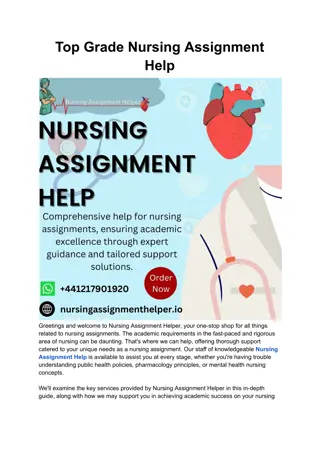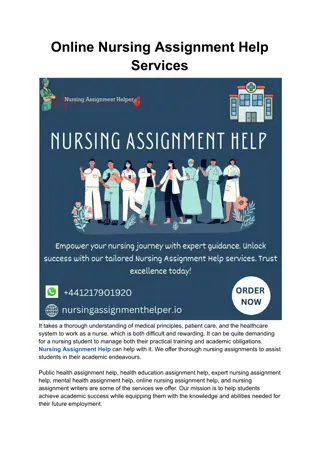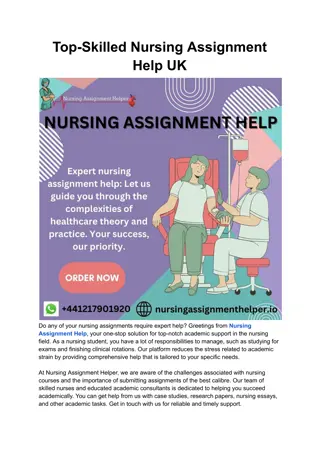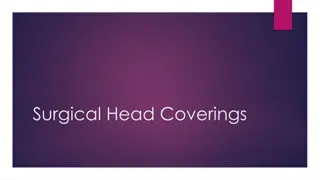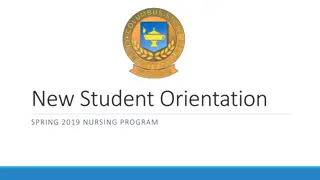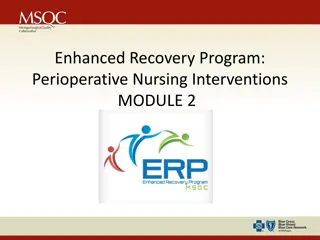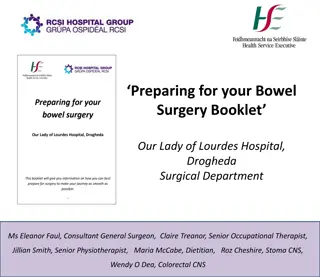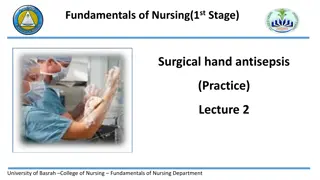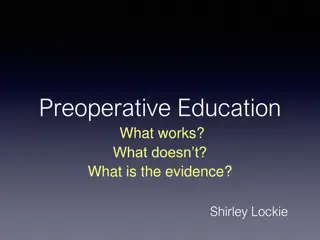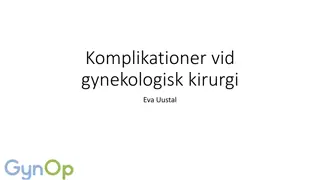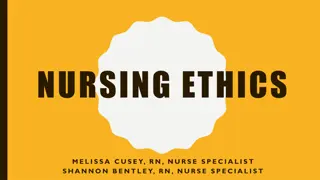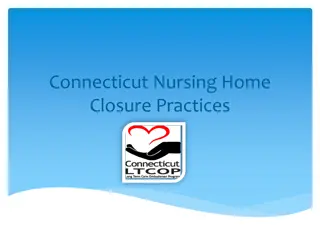Enhanced Recovery Program Implementation in Post-Surgical Nursing
Introducing and implementing an Enhanced Recovery Program (ERP) in post-surgical nursing can significantly improve patient outcomes, experience, and satisfaction. This clinical pathway designed by MSQC aims to optimize patient recovery by standardizing protocols throughout the perioperative care process. The program emphasizes multidisciplinary teamwork, patient engagement, and continuous analysis for successful ERP compliance and positive outcomes. Hospitals can benefit from shortened lengths of stay, improved patient preparation for surgery, enhanced nursing workflow efficiency, reduced anxiety, accelerated recovery, decreased morbidities, increased reimbursement, and better patient satisfaction. By focusing on essential aspects of ERP post-surgical nursing, healthcare providers can pave the way for better patient care and cost savings.
- ERP Implementation
- Post-Surgical Nursing
- Patient Outcomes
- Multidisciplinary Teamwork
- Healthcare Quality
Download Presentation

Please find below an Image/Link to download the presentation.
The content on the website is provided AS IS for your information and personal use only. It may not be sold, licensed, or shared on other websites without obtaining consent from the author. Download presentation by click this link. If you encounter any issues during the download, it is possible that the publisher has removed the file from their server.
E N D
Presentation Transcript
Post-Surgical Nursing MODULE 3 Created by MSQC for the purpose of initiating and maintaining ERP Quality Improvement Projects by hospitals in the Collaborative.
Objectives This clinical pathway is designed to: Introduce Enhanced Recovery Program (ERP) principles and elements Explain ERP s benefit to your patients and INSERT YOUR HOSPITAL S NAME HERE Identify essential aspects of ERP Post-Surgical Nursing Specify your role in patient engagement Define your responsibilities in post-surgical ERP implementation Offer strategies for successful implementation of post-surgical ERP at INSERT YOUR HOSPITAL S NAME HERE
Enhanced Recovery Program MSQC Enhanced Recovery Programprovides a framework for sites to use in establishing and implementing standardized protocols directed at optimizing patient recovery during the preoperative, intraoperativeand postoperative periods of care
Benefits of Enhanced Recovery Program Potential impact of ERP on: Patient Outcomes Patient Experience (As reported by ERP Patients) Your Hospital Here Shortened length of stays (LOS) They felt better-prepared for surgery Improved patient outcomes NO increases in readmissions Improved efficiency on nursing workflow (due to increased patient engagement) Their anxiety was reduced with better confidence in good outcomes Accelerated return to normal activities Improved public reporting The surgery and hospitalization went according to plan Decreased morbidities Increased reimbursement and shared savings They were ready for discharge They were likely to recommend Cost Savings / Improved Reporting Better Patient Outcomes Better Patient Satisfaction
Essentials for Success Multidisciplinary Teamwork Planning Implementation through every phase Education Engagement Leadership Health care providers Development of customized ERP protocols and order sets Pre-surgical Intraoperative Post-surgical Cultivating ERP at YOUR HOSPITAL S NAME HERE Analysis ERP Compliance Outcomes Patient feedback
Impact of Nursing on ERP Nurses represent the critical mass required to sustain a powerful and effective Enhanced Recovery Program Assessment Evaluation Diagnosis NURSING PROCESS 235U 236U 141Ba 92Kr Implementation Planning PATIENT RESULTS: Shared Decision Making Sustained Motivation Better Compliance with Initiatives Recovery Goals Met
Enhanced Recovery Program Elements Perioperative Phase Preoperative Phase Postoperative Phase Intraoperative efficiency Presurgical counseling, education, conditioning, readiness and preparation. Postoperative Interventions Metabolic/fluid conditioning Prevention of postop ileus Antiemetic prophylaxis Mechanical bowel prep with oral antibiotics (colectomy cases) Fluid management VTE prophylaxis Antimicrobial prophylaxis Skin prep Maintenance of normothermia BP and glucose maintenance Pain management VTE prophylaxis Early mobilization Early oral feeding Antiemetic prophylaxis Early removal of urinary catheters Early removal of nasogastric tubes and wound drains Glucose control Pain management Fluid management Explanation of hospitalization Testing/ labs Nutritional assessment PONV scoring Exercise monitoring Mobilization targets Smoking cessation/ fast Alcohol cessation Fluid management Pain management
ERP-Perioperative Initiatives Nursing Interventions Extended Postoperative Recovery Postoperative Recovery Preoperative Optimization Perioperative Initiatives Home Hospital Home FOCUS on Nursing responsibilities for this time span
ERP and Post-Surgical Nursing Pre-Surgical Counseling and Education Post-Surgical Nursing responsibilities involve every phase of the Enhanced Recovery Program: Patient Feedback and Outcomes Reporting and Analysis Pre-Surgical Conditioning and Readiness Targeted Postoperative Interventions Pre-Surgical Intraoperative Post-Surgical Pre-Surgical Preparation Intraoperative Efficiency
ERP Nursing Responsibilities Key Components of ERP Nursing Responsibilities Contingency Planning Patient Engagement Clinical Guidelines
Postoperative Clinical Guidelines Clinical Guidelines VTE prophylaxis Control of postoperative nausea and vomiting Postoperative pain control Early postoperative (oral) feeding Early mobilization Avoidance of nasogastric tubes Avoidance of wound drainage Fluid management Urinary catheter removed postoperative day (POD) 1-2 Alvimopan Postoperative glucose control Multidisciplinary communication and teamwork is a key element of success Francis et al., 2012 Gustafsson et al., 2013
Patient Engagement the goal is toSUPPORT andSTRENGTHEN patients determinations of their health care needs and self-care efforts with a view to obtaining maximum value and improved health outcomes. Coulter (2012) Coulter, Ellins (2007)
Arrival to Inpatient Floor *History Assess pre-surgical and intraoperative ERP compliance* VTE Prophylaxis apply/obtain order(s) if not already complete Mechanical (compressions stockings and intermittent pneumatic compression devices) Pharmacological (heparin/low molecular weight heparin) Postoperative Nausea and Vomiting assess score and treat using multimodal approach Pain Control assess score and medicate for relief (if necessary), reinforce pain goals/targets Early Oral Feeding assess whether the patient has received clear fluids/food and if tolerated Alvimopan verify has been ordered and is on patient s list of scheduled medications Fluid Management begin recording fluid type and amount received Initiate post-surgical ERP checklist Francis et al., 2012 Gustafsson et al., 2013
ERP Nursing Guidelines Ensure patient is receiving mechanical and (timely) pharmacological prophylaxis Periodically reassess VTE risk Educate patients regarding importance Notify physician of missed doses/refusals VTE PROPHYLAXIS Perform PONV post-surgical risk assessment Perform regular patient assessments (through 48 hours past discharge from PACU) Be aware of potential de novo PONV patients Use multimodal treatment approach POSTOP NAUSEA AND VOMITING Francis et al., 2012 Gustafsson et al., 2013
ERP Nursing Guidelines Perform regular assessments of pain status Reinforce and educate patients regarding pain expectations and targets Follow multimodal approach to treatment, encouraging non-narcotic medications PAIN CONTROL Same day as surgery: start clear fluids (as soon as possible following surgery), begin normal food and provide oral nutritional supplements Postop day 1+: patient should receive fluids as desired, normal meals and oral nutritional supplements NUTRITION Francis et al., 2012 Gustafsson et al., 2013
ERP Nursing Guidelines Day of surgery: patient to be out of bed for 2 hours Postop day 1+: patient to be out of bed 6 hours/day Assess for barriers to mobilization Motivate patients to achieve targets Key element in preventing postop ileus EARLY MOBILIZATION Remove postoperative day 1 or 2 (unless contraindicated) URINARY CATHETER Francis et al., 2012 Gustafsson et al., 2013
ERP Nursing Guidelines Enteral fluid as soon as possible Discontinue IV fluids as early as possible (recommended postop day 1) Manage fluids according to specified ERP protocol Record fluid administered FLUID MANAGEMENT Nasogastric tubes and wound drains should be avoided whenever possible If necessary, assess and advocate for removal when appropriate TUBES AND DRAINS Francis et al., 2012 Gustafsson et al., 2013
ERP Nursing Guidelines GLUCOSE CONTROL Avoid hyper- and hypoglycemia Adhere to glucose management protocols Ensure ordered and scheduled on patient medication list Administer per medication schedule (until discontinued) ALVIMOPAN Francis et al., 2012 Gustafsson et al., 2013
Contingency Planning Notice deviation from routine ERP course Form contingency plan with patient: Provide reassurance and education regarding options Set new targets for the patient to work toward Provide reinforcement through motivation toward new targets and encouragement of plan ** All changes should be communicated to surgeon/physician, oncoming nurse at shift change and multidisciplinary team members**
Discharge Readiness Patient s pain is adequately controlled with oral analgesia. Elements to determine if your patient is ready for discharge Patient is tolerating solid food and no longer requires IV fluids. Patient is returned to pre- surgical functional status. Patient feels ready and willing to go home. Preparation for all discharge needs is complete. Francis et al., 2012 Gustafsson et al., 2013
Discharge from Hospital Written discharge instructions Specific Contact Information Verbal review of all discharge information and verification of patient understanding Francis et al., 2012 Gustafsson et al., 2013
Implementation Ideas Hold regular ERP team meetings where clinicians have the opportunity to discuss ERP. Review patient level data for ERP and non-ERP patients to demonstrate impact of the program. Select clinical champions from multiple areas that are excited about the program and willing to work to engage other clinicians. Acknowledge and celebrate ALL successes! NHS Enhanced Recovery Partnership Programme - Sharing The Learning
Summary This clinical pathway: Identified essential aspects of ERP Post-Surgical Nursing Specified your role in patient engagement Defined your responsibilities in post-surgical ERP implementation Offered strategies for successful implementation of post-surgical ERP at INSERT YOUR HOSPITAL S NAME HERE Explained ERP s benefit to your patients and INSERT YOUR HOSPITAL S NAME HERE
Questions NEXT PHASE
Our goal is that this guide will serve as a resource to help you guide patients to achieve optimal preparation for surgery and success in realizing the many benefits of the Enhanced Recovery Program. Through monitoring, educational efforts, system changes and coordination of services of the healthcare team and many hospital divisions, patients will attain improved length of stay, decreased readmission rates and reduced morbidity and mortality, and the hospital will demonstrate a return on investment which exceeds the incremental costs of these efforts.





